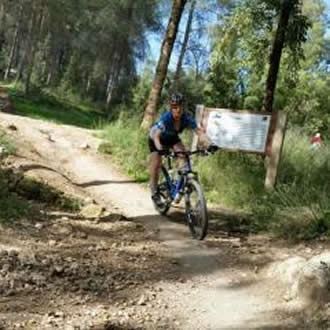Hosmasa Yad La "Haganah" Museum
Museums And Culture
The Hosmasa Museum tells the story of the 'Hagana' in Holon and its surroundings during the War of Independence and the pre-statehood period.
The site is located on a hill, bordering sand dunes that were once the only landscape of the region.
The building was built in 1934 on land purchased by the owners of "AgroBank," Yaakov Mirenburg and Shimon Yavetz, residents of the area. The building was built as a house above a well and was inhabited by a security guard and his family.
The Hosmasa building and the sands around it served the Hagana as a training area from the mid-1930s until 1948.
It was very difficult to reach the site, and the desolate place enabled thousands of trainees from Tel Aviv and the center of the country to conduct a training program hidden from the eyes of the British.
Hosmasa served as a station on the security road that operated during the War of Independence.
The road connected Tel Aviv to the southern colonies, leading to Jerusalem and the Negev. The convoys carried equipment, food, weapons, ammunition, and people to the besieged and remote settlements.
The building is built in the "Bauhaus" style, characterized by its simplicity, lack of decoration and symmetry, functionalism and universality.
At the museum is a moving display that tells the story of the Hagana organization in Holon, their training, the activities of the underground, the secrecy, the values of the period, the security and daily routine in the context of the struggle for independence.
Visiting the museum, visitors will experience the spirit of the period, and, will experience searching for hidden caches, will operate Morse code and more.
The visit includes a tour of the garden to see the exhibits scattered around - the "Davidka Tunnels," see mortars and armored cars, as well as a film about the site.
There is also a digital game that uses mobile devices to play.
- Region
- Tel Aviv & Center
- Address
- 53 David Elazar St., Holon
- Opening hours
- By appointment
- Parking
- Parking
- Accessibility
- Accessible
- Suitable for children
- Suitable for children
- Phone
- +972-3-5050425
- Fax
- +972-3-5044866
- museum@holonet.org.il
- Website
- bit.ly
Similar attractions



Jaffa Theater - Stage For Arab And Hebrew Culture




Nearby trails

A family tour of Ahuzat Bayit in Tel Aviv

The Boxthorn Trail and the Rampart Trail

Cycling Route in Ben Shemen Forest

Track Alexandroni Monument

The Squill Trail at Tel Afek


Nearby restaurants







